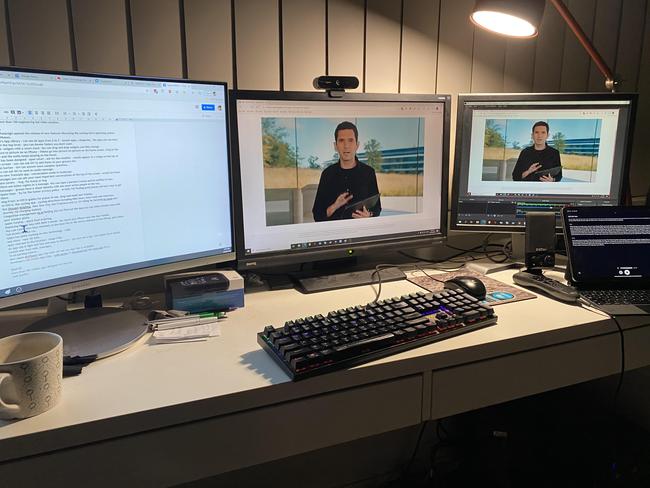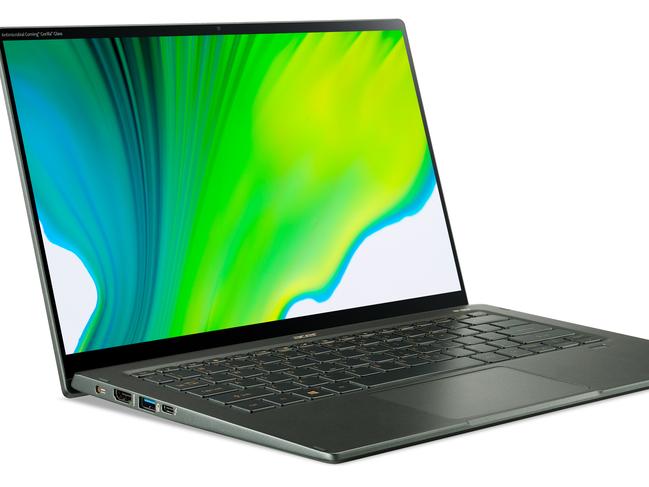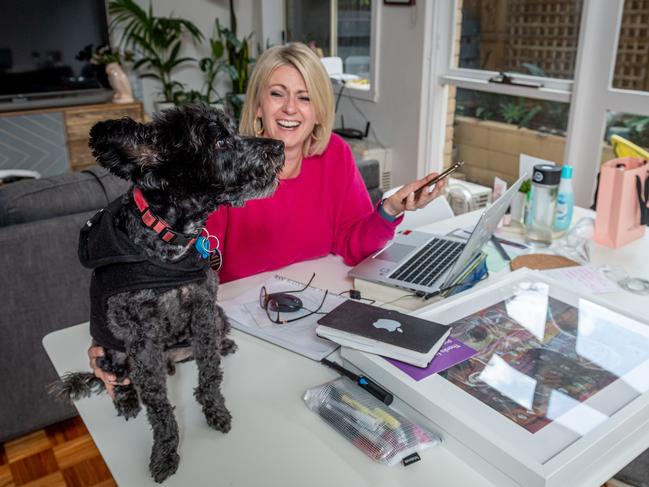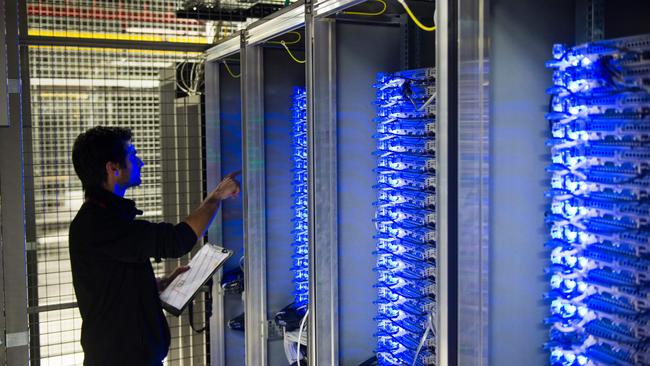Home suite home: kit for your new office
New tools are on the way to help us work from home.

Any other year I would have flown to San Francisco and travelled to Apple Park at Cupertino to attend the tech behemoth’s Worldwide Developers’ Conference (WWDC) in person. The slickly executed Silicon Valley shindig is the big showcase for a year’s worth of software, which developers and Apple enthusiasts swarm annually. It’s so popular that Apple has held ballots to select which of its millions of registered developers can attend, for which they pay about $US1600 ($2300) per ticket.
But, as with all big international events, coronavirus forced the entire show online, and the big question in the tech world was whether Apple’s reveals have the same showstopping impact without the anticipation and rapturous applause.

It’s 3am, pitch black outside, and I’ve had a super-early breakfast. I have my home computer with video capture and audio-to-text systems poised to go. This year I don’t get to mix with hundreds of technology journalists from around the world in daylight hours, but we all tend to agree the remote approach is extremely efficient. And this time, all developers join in for free.
While much of the headline tech has been in development since before the pandemic, the COVID-19 theme inevitably infused some of the headline announcements, too.
Apple VP Technology Kevin Lynch announced a handwashing feature for Apple Watch that uses sensors to detect your washing motions and listens for the swish of running water, and the squishing sound of soap in your hands.

It offers coaching and a 20-second countdown for the washing process – the minimum health authorities recommend for washing away the virus.
There were other announcements that will help us refrain from touching items. Apple’s AirPod earbuds will automatically detect when you swap from listening to music or taking calls on an iPhone, say when you arrive home, to connecting to your Mac or iPad on your home desk.
Apple unveiled its new digital car key and an ability to unlock your car by tapping your phone on it. Apple’s first collaboration is with BMW’s 5 Series. While not directly virus-related, the less touching you do, the better.
And Apple is not alone responding to COVID-19 with innovation. During the conference, Taiwan’s ACER took the initiative and announced a new flagship Acer Swift 5 laptop with “antimicrobial” coatings on its display and chassis.
These surfaces attempt to reduce or stop germs, fungi and viruses sticking to them, and surviving for lengthy periods.
Coronavirus is supposed to typically survive five days on metal and four days on glass so maybe ACER is onto something. I’d still be wiping down my laptop, especially if it is a shared work item.

Apple’s WWDC came this week at a time of heightened community interest in technology. Working at home means we no longer can rely solely on the office IT department supplying us with the right computing gear, as it does in the office. It is now up to us.
Australia went into lockdown in one almighty rush in March. Many jobs, such as in hospitality and tourism, obviously couldn’t be done from home. But many other jobs could.
We learned to manage working remotely on our laptops, without access to the more sophisticated office facilities, internet, computer equipment and software we are used to, and IT support on tap.
It was an amazing transition. Zoom came from nowhere to be the videoconferencing tool of choice and even a verb in lockdown lexicon. Workplaces organised Zoom staff meetings and families and friends got together on video calls.
We discovered it wasn’t hard to email, create documents and build spreadsheets and presentations on laptops at the kitchen bench, and we managed. Our home internet may have choked from overuse by family members, and online security at home may have been shaky.
Many of us learned new skills, such as setting up a virtual private network (VPN) to provide a secure pipeline between home internet and the office, or installing and accessing a remote version of their work software from their home computer. We settled into this.
Fast-forward to June, and many of us don’t want to return to the office full-time. We savour the extra hours in a domestic environment with family. Some of us have discovered we concentrate better and are more productive at home.

There’s the time saved by not commuting – some who commute from outer suburban areas to Australian CBDs save more than three hours per day. There’s the virus risk posed by crowded commuter trains and buses, and the gamble of working in large buildings for lengthy periods with continually recirculating air.
The surveys back this. One commissioned by Citrix found that 80 per cent of Australians believed they could be productive working from home with the right tools, and almost 70 per cent said their productivity levels were the same or better than in the office.
Many firms are planning for some staff to work at home permanently. This applies even in complex scenarios such as call centres.
Global travel and medical insurer Cover-More Group undertook the massive task of distributing its call centre to around staff’s homes in early March. “Medical assistance added a great deal of complexity to what we had to do, because we need to answer medical assistance calls within 15 seconds,” says Nicki Doble, Cover-More Group chief information officer.

Cover-More, which has local call centres in Sydney and Brisbane, continued to channel medical calls to centres but travel insurance claim calls went to people’s homes. Ms Doble says the company loaned equipment and other devices to staff who didn’t have computers at home, got them to connect via a VPN and issued dongles to get around slow home internet. “We’re talking hundreds of loan devices that we had to give people because most people only had one desktop at home.”
Cover-More also had to find USB headsets for hundreds of staff because the fancy $700-800 headsets call centre headsets wouldn’t work with home machines. You’d think Cover-More would want to get away from this logistics nightmare, but Ms Doble says having part of its call centre at homes will be the new normal.
“We’ve had a lot of positive feedback from people that they are keen to stay working from home. We’re redefining our digital workplace strategy on how we do this.”
Cloud control

Computer firms developing hardware and software are now aware that the shift is here to stay and are refocusing development efforts. Cloud services are key to a future permanent remote work effort.
Karl Durrance, director of enterprise for Amazon Web Services Australia, says AWS has been busy organising speedy work-from-home transitions. He says Australian superannuation fund CBUS revamped itself as a cloud-based advice service in two days. Residential aged-care company Juniper was using the AWS cloud to connect more than 1880 employees, caregivers, doctors and family members virtually so operations could continue to run smoothly.
“The pandemic has seen many organisations adopt cloud technology to quickly mobilise remote workforces, scale operations to handle an increase in customer inquiries, and develop new solutions to respond to changing consumer demands.” AWS also offers virtualised access for remote workers to access work software.
Microsoft has ramped up its Teams collaboration software and has developed a mobile app. Teams lets people chat, meet, call, collaborate and share lists, documents and calendars – all in one place. That should suit workforces at home.
Coronavirus has seen multinational software firm Adobe focus on introducing collaboration across its software products.

Adobe’s chief product officer Scott Belsky recently told The Australian that the changes will let graphic artists, photographers and other creatives work together on the same project. It might be collaborating while working on a document, developing an image in Photoshop or while video editing.
He says the sharing feature in Adobe products includes a comment thread, so users can chat about changes they make to assets during a collaboration.
“We have a share for review feature that is coming to (design tool) InDesign right now that we ourselves have been using over the last few months where, if you’re making a publication and a magazine or whatever, you no longer have to go to editorial meetings,” he says.
Dropbox too has introduced new tools for users and home workers, such as password management, cloud backups for Mac and PC folders, and a vault for securely storing important digital documents. There’s secure e-signatures and a Dropbox app centre that includes tools from Zoom, Slack and Google.
WFH security concerns

The achilles heel is security. Remote workers are potentially a weak point for hackers seeking a pathway into a firm’s network.
AI cyber security firm Darktrace is among those warning of this. Darktrace’s Max Heinemeyer says while company equipment might be secure, personal devices with weaker controls could offer hackers that gateway. The weak point might be your child’s computer or grandparents’ computer, a smart fridge or freezer, which offer hackers an opportunity.
He says malware on one device at home could migrate to other devices. Some malware can even jump between wireless routers.
Lax security controls such as no firewalls, no data loss prevention and no vulnerability scanning are another problem.
He says IT departments within firms can easily become overwhelmed keeping tabs on what staff have on their home networks.
Companies attempt to get around this problem with rules requiring all contact with a company’s system to be via a virtual window. VPNs offer a secure path from a home to office system.
But there are weaknesses, such as the ability to route infected data from home to an office network via the cloud. Online security firms such as Australia’s FirstWave Cloud Technology have been adapting their cyber security products to the work-from-home scenario.

FirstWave lets companies funnel their traffic through its “black box” security system in the cloud. It offers its products through partners such as Telstra, Cisco and NTT Data.
Chief operating officer Neil Pollock says FirstWave had added “endpoint security” to its services for remote workers. He says the company rolled this out within two weeks of the start of lockdowns. This endpoint protection solution sits on workers’ laptops, and it is enterprise grade rather than a consumer antivirus solution.
The first weeks of working from lockdown with staff scrounging to get their laptops and work systems going were a risky venture for businesses but, rather than being a nightmare, working at home is something many now cherish. And there is a growing arsenal of tools to aid us.
